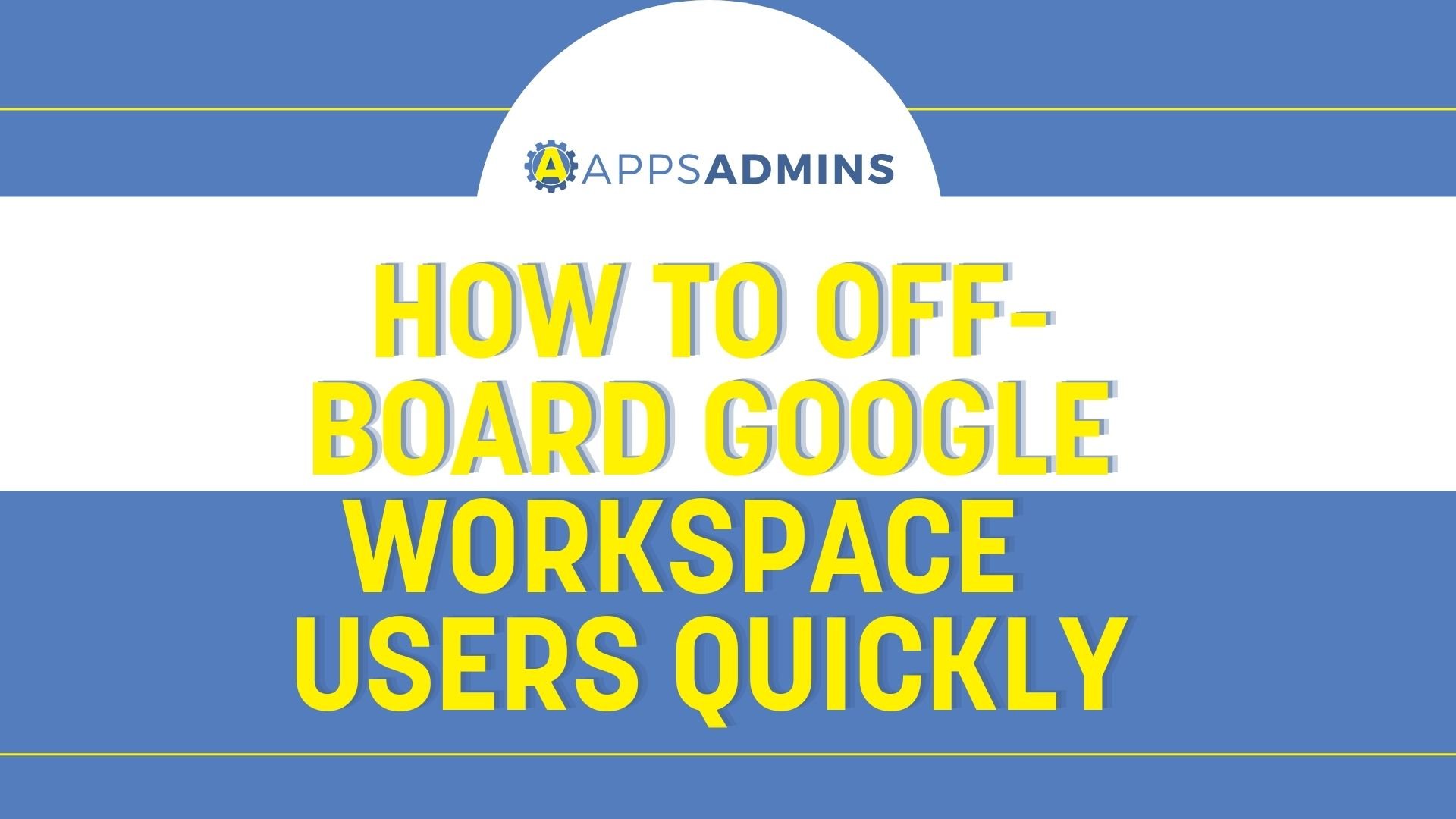G Suite Business Free for 30 Days
Sign up for a Free 30 Day Trial of G Suite Business and get Free Admin support from Google Certified Deployment Specialists.

 Over the last decade or so, the prevalence of cloud-computing has really skyrocketed. What started off as nothing more than a limited collection of computing services, has now evolved into a highly-sophisticated ecosystem, rapidly emerging as the de-facto solution for enterprise IT. According to a study by Microsoft, nearly a third of organizations are working with four or more cloud vendors. In other words, it seems that the future of IT isn't just cloud computing - it's multi-cloud.
Over the last decade or so, the prevalence of cloud-computing has really skyrocketed. What started off as nothing more than a limited collection of computing services, has now evolved into a highly-sophisticated ecosystem, rapidly emerging as the de-facto solution for enterprise IT. According to a study by Microsoft, nearly a third of organizations are working with four or more cloud vendors. In other words, it seems that the future of IT isn't just cloud computing - it's multi-cloud.
Unfortunately, the majority of cloud providers would prefer that you don't consider multi-cloud at all, as it benefits them to keep you locked in. However, a report by Ovum found that a quarter of firms are unhappy with their cloud provider, due in part to poor service performance and lack of personalized support.
Ultimately, every CIO should have the freedom to control the future of their business. Whether you're considering multi-cloud deployments because you want to have more options, or you're interested in multi-cloud to create more productivity and minimize risk within your organization, there are a host of benefits to building for multi-cloud.
The Benefits of Multi-Cloud Infrastructure
In our opinion, every business should be free from unnecessary risk with their technology, free from being locked in by vendors, and free to use the best available tools and technology for competitive purposes. Designing a multi-cloud solution is one of the best ways for a modern business to ensure their freedom for the future of IT.
Building a multi-cloud architecture is the definition of operations freedom. Today, many companies already prefer this deployment option because it allows them to steer clear of the "keeping your eggs in one basket" issue that can lead to a variety of problems within the workplace. Maintaining an entire cloud infrastructure through a single vendor can sometimes leave companies open to a wide range of issues, including data center outages, bandwidth issues, and vendor lock-in.
A cloud application that's constantly going offline doesn't reflect well on your business, and could even lose you customers. If critical applications and data depend on a single cloud provider, the ability to negotiate through difficult business problems can also be constrained.
Lately, compliance issues and data sovereignty have also lead to a surge in multi-cloud solutions for organizations, as companies begin to worry about how they can comply with current rules and improve their exposure when operating in areas where there are no rules governing cloud services. Storing data locally can minimize issues over data, while directing traffic to data centers that are closest to users can be great for latency-sensitive solutions.
The Results of IT Building for Multi-Cloud
For most companies, the benefits of the cloud are obvious:
1. Gain Autonomy and Eliminate Lock-in
One of the key advantages of multi-cloud is the ability to maintain autonomy and control. For any IT system, relying on one vendor can be a difficult process, as it leaves your company vulnerable to the problems of that vendor.
" When your Cloud Strategy doesn't depend on a single vendor, there's more freedom for your company."
Additionally, as technologies evolve, and the enterprise environment changes, multi-cloud solutions allow for flexibility in a CIO's infrastructure, making your business more robust. Through contract negotiations, this extra layer of flexibility can also provide leverage, which is very important for managed service providers and enterprises with significant cloud footprints.
2. Reduce Operating Costs
Cloud service providers often offer a wide range of different pricing models and packages, with solutions to bill by the hour or even the minute in some cases. When comparing alternative solutions, significant differences can exist that impact the IT environment and operating costs. In some cases, IT management might want to choose the cheapest option available, while in others, leaders will prefer to pay more for specific capabilities.
When comparing the offerings across a range of cloud vendors, mixing and matching can be the best decision for many companies. For instance, you might choose Google for its instant-launch capabilities, and Azure for its custom packages.
3. Improve Flexibility
Last year, Gartner published their "Critical Capabilities" report for cloud infrastructure as a service. This analysis showed the features and capabilities offered across a range of leading cloud vendors. Each cloud can offer specific values and benefits over the other.
With multi-cloud flexibility, CIOs have complete freedom to design the cloud that works best for their team. For instance, one vendor might offer features like security controls, database as a service, or high availability architecture that's simply not supported by their competitors. In other words, shopping around for the right features to benefit your enterprise, while continuing to lower resource costs is the perfect solution for a flexible modern business.
Preparing for the Future with Multi-Cloud
At the end of the day, the multi-cloud solution is all about enabling new choices and freedom for CIOs and organizations. It gives you the chance to pick and choose the components that are most relevant to your specific needs and case environments. Multi-cloud is more like a buffet for IT experts, than a pre-set menu.
For instance, organizations that have already got a large amount of dependency within the Windows ecosystem might find that leveraging a certain set of Microsoft Azure service is useful. However, they might also want to make use of Google for their analytics and machine learning capabilities. This level of freedom, and the ability to choose the cloud services that work for you, rather than settling for "whatever is available", is why many big companies have already taken the multi-cloud approach.
While the world of multi-cloud is still growing, it's already seduced plenty of early-adopters who are looking for ways to differentiate their business, and become more competitive for the future. In a world of digital transformation, companies that take the multi-cloud solution are setting themselves apart from the crowd.
It's clear to see that multi-cloud is the next logical step for any business's cloud journey. After all, it gives you freedom, control, and the ability to mitigate risks with downtime, or even bad relationships with your cloud provider. To build the best, then you need to learn how to develop from a multi-cloud perspective.
.jpg?width=818&name=appsadmins-svg-rules-1%20(2).jpg)







